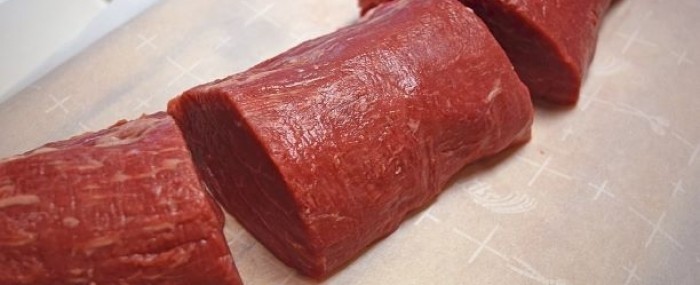
Brazilian firm develops ultra-fast method to test tenderness of beef cuts
28 de julho de 2020By Eduardo Geraque | FAPESP Innovative R&D – A project conducted by researchers at the Brazilian company Fine Instrument Technology (FIT), with support from the FAPESP Innovative Research in Small Business Program (PIPE), has the potential to counteract the insecurity felt by consumers who pay more for a joint of beef because they expect it to be genuinely tender but are frequently disappointed.
The firm was founded in São Paulo City and later moved to São Carlos in the interior of the state of São Paulo. It specializes in products and applications that involve the use of nuclear magnetic resonance.
This time the proposal is to bring a portable version of a surface NMR machine to market by July 2021. The device will be able to measure the tenderness of commercially packaged beef cuts non-destructively.
According to animal scientist Fabiane de Souza Costa, who is leading the research effort, specifying the texture of beef cuts is relevant for the entire production chain. “This information can be used by all players in the beef industry, such as meat packers, supermarkets, butchers and restaurants, as well as the scientific community, universities, and research institutions,” Costa told FAPESP Innovative R&D.
The most innovative aspect of the project, she added, is development and calibration of a software platform capable of generating reliable information on tenderness quickly and precisely. “The traditional technique requires the beef to be sliced and takes at least two days to produce a result. The method we’re proposing will examine the meat in its commercial packaging when it’s ready to be sold, and will produce a result in one or two minutes,” Costa said.
In addition to the development of the ideal computer program to measure beef tenderness without the need for heavy equipment and time-consuming procedures, another significant advance that will be achieved by the team of researchers in São Carlos will be having the software run on a portable device that can be used anywhere. Today beef tenderness is typically evaluated using a meat texture analyzer.
Another of the research group’s concerns is how the information will be conveyed to consumers. “It’s pointless to include technical specifications in the label if they make no sense to the consumer,” Costa said. “We’re considering a more intuitive approach that could actually be useful to the consumer, something like the energy efficiency seal [for appliances] granted by PROCEL [the Brazilian Electricity Conservation Program] or the intensity scale on coffee labels.”
The idea of developing a portable NMR machine to test beef tenderness automatically is in line with the firm’s focus on innovative uses of the technology in agribusiness rather than medicine. Its service offering includes low-field NMR for chemical and physical analysis of fruit, grains, olive oil, and milk. SpecFIT, its low-field NMR device, does not produce images but evaluates sugar content in fruit, for example, by measuring the “disappearance rate” of the radio frequency pulse applied to the sample and comparing it digitally with information from a database that translates this metric into chemical composition. SpecFIT is already used to test meat (read more at: agencia.fapesp.br/25725).
“The difference is that now we’ll have a genuinely portable machine,” Costa said. “We aim to add value to meat so that it isn’t sold as a commodity, to verify quality, and to inform consumers by means of an efficient test performed by a properly calibrated device. The main innovation of our project is the non-destructiveness of the tenderness test.”
